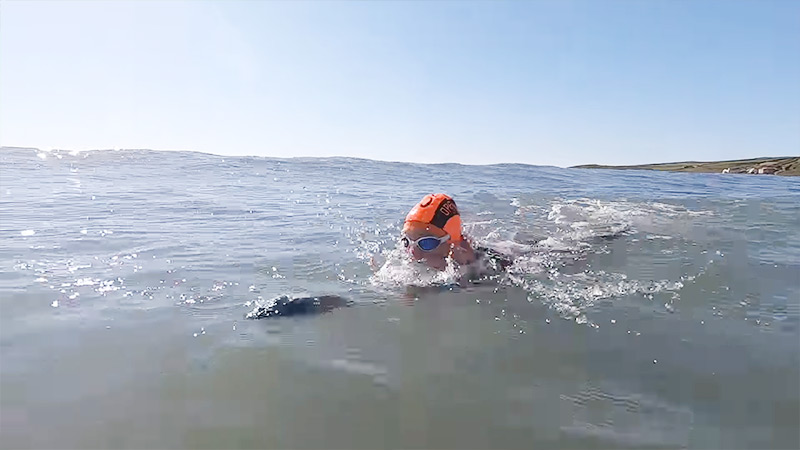Poison ivy, a notorious plant found across North America, is infamous for causing skin irritations that can leave anyone itching for relief.
Its hallmark “leaves of three” hide a venomous secret: urushiol oil, a potent irritant responsible for the itchy, blistering rash that often follows contact.
When afflicted by this unwelcome visitor, individuals often seek relief through traditional remedies and home treatments. From topical ointments to herbal concoctions, people have explored various solutions to ease the discomfort.
However, one unconventional yet intriguing remedy has surfaced – swimming in saltwater. In this article, we’ll delve into the intriguing notion of whether taking a dip in the ocean can provide relief for the vexing poison ivy rash.
Understanding Poison Ivy
Understanding poison ivy is crucial for anyone who spends time outdoors, particularly in North America where this common plant species, scientifically known as Toxicodendron radicans, thrives.
Poison ivy is notorious for causing skin rashes and allergic reactions upon contact, making it essential to identify and avoid it. Its leaves are characterized by a distinctive “leaves of three” arrangement and can vary in color and texture throughout the seasons.
The culprit behind the rash is urushiol, an oil found in poison ivy leaves that can cling to skin, clothing, and objects, triggering delayed allergic reactions.
If exposed, promptly washing the affected area with soap and water, along with thorough cleansing of any contaminated items, is crucial to prevent the rash’s spread. Recognizing poison ivy and adopting preventive measures are key to enjoying the outdoors without the discomfort it can bring.
Does Swimming In Salt Water Help Poison Ivy?
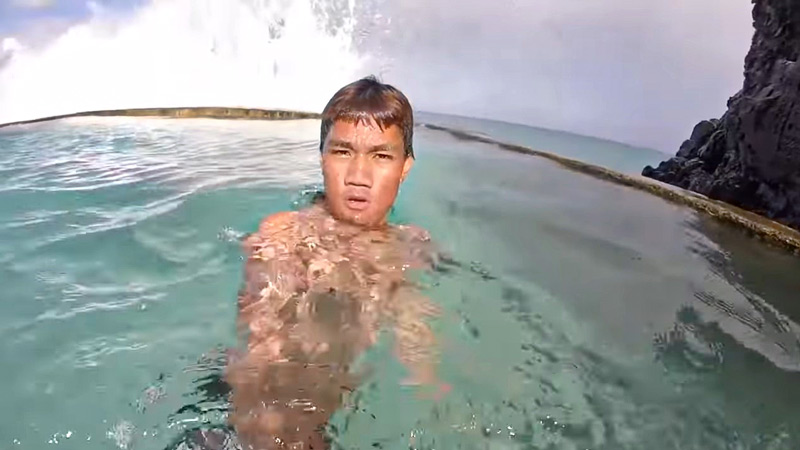
Swimming in saltwater is a remedy that some people believe can help alleviate the discomfort associated with a poison ivy rash. However, its effectiveness is largely anecdotal, and results can vary from person to person. Here are some points to consider:
Theoretical Benefits
- Antiseptic Properties: Salt has natural antiseptic properties, which may help prevent infection in open blisters or sores caused by scratching the poison ivy rash.
- Drying Effect: Saltwater can have a drying effect on the skin. Poison ivy rashes often ooze a clear liquid, and some people believe that saltwater can help dry out these weeping blisters, potentially reducing inflammation and itching.
- Exfoliation: Salt can act as a gentle exfoliant, helping to remove dead skin cells that may be contributing to itchiness and discomfort.
- Pain Relief: The cool, soothing sensation of swimming in the ocean may provide temporary relief from the itching and discomfort associated with poison ivy.
Considerations
- Varied Results: The effectiveness of saltwater treatments can vary widely among individuals. While some people report relief and improved healing, others may not experience significant benefits.
- Possible Irritation: For some individuals, saltwater can cause skin irritation, especially if they have open wounds or sensitive skin. It’s crucial to ensure that the saltwater solution is not too concentrated, as this could exacerbate the rash.
- No Substitute for Medical Care: Saltwater should not be considered a substitute for medical treatment. If you have a severe poison ivy reaction, it’s essential to consult a healthcare professional who can provide a proper diagnosis and recommend appropriate treatments, such as corticosteroid creams or oral antihistamines.
- Preventive Measures: The best way to deal with poison ivy is to prevent contact with the plant in the first place. Learn to identify poison ivy, wear protective clothing when in areas where it may grow, and wash your skin and clothing promptly if you suspect exposure.
How Does Salt Get Rid of Poison Ivy?
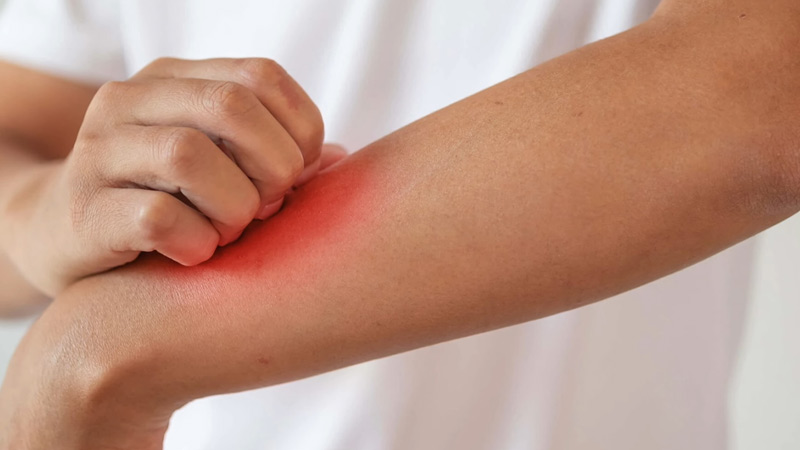
Salt, specifically in the form of salt water, is not a method for getting rid of poison ivy plants themselves but rather a potential remedy for alleviating the symptoms and discomfort associated with a poison ivy rash. Here’s how it works:
Drying Effect
Saltwater can have a drying effect on the skin. When you apply a saltwater solution to the affected area of your skin, it can help dry out the weeping blisters and the clear fluid they produce.
This drying effect may reduce the overall moisture content of the rash, potentially aiding in the healing process and minimizing discomfort.
Exfoliation
Salt can act as a gentle exfoliant. By applying a saltwater solution and gently rubbing it on the rash, you can help remove dead skin cells. This may make the skin feel smoother and alleviate some of the itching and irritation caused by the rash.
Antiseptic Properties
Salt has natural antiseptic properties, which means it can help prevent infection in open blisters or sores caused by scratching the poison ivy rash. Keeping the rash clean and free from infection is crucial for a smooth healing process.
When is Poison Ivy No Longer Contagious?
Poison ivy, or more accurately, the rash caused by contact with urushiol oil from poison ivy, is not contagious. You cannot spread poison ivy rash to another person through direct contact. However, it’s important to understand a few key points regarding the rash:
Spread of Urushiol
The primary concern with poison ivy is the spread of urushiol oil. If urushiol oil is still present on your skin or clothing, you can inadvertently transfer it to other surfaces or people.
This means that while the rash itself is not contagious, the oil that causes the rash can be spread if not properly cleaned.
Persistence of Urushiol
Urushiol can remain active on surfaces for quite some time. It can remain potent on objects like clothing, gardening tools, or pet fur, which is why it’s crucial to thoroughly clean and wash any items that may have come into contact with the oil.
Secondary Rash
It’s possible to develop a secondary rash if you touch objects or surfaces contaminated with urushiol, even after your initial rash has appeared.
So, even though you can’t give someone your poison ivy rash, you can indirectly expose them to the urushiol oil, which can lead to a new rash if they come into contact with it.
How do I get rid of poison ivy in one day?

Getting rid of poison ivy in one day is a challenging task because poison ivy removal typically requires time and careful effort to ensure it’s done effectively and safely.
Poison ivy can be stubborn, and attempting to eliminate it too hastily may result in incomplete removal or exposure to the irritating urushiol oil.
However, if you need to address a poison ivy problem promptly, here are steps you can take, although complete eradication may take longer than one day:
Wear Protective Gear
Before you start, make sure to wear long sleeves, pants, gloves, and closed-toe shoes to protect your skin from contact with the plant.
Gather Necessary Tools
Gather tools like a shovel, garden clippers, and a plastic bag for disposing of plant material.
Cut Back the Poison Ivy
Using garden clippers, carefully trim back the poison ivy vines and leaves. Place the cuttings directly into a plastic bag to prevent contact.
Dig Out the Roots
Dig around the base of the poison ivy plant to expose the roots. Use a shovel to carefully remove the roots, being cautious not to touch the plant with your hands. Dispose of the roots in the plastic bag.
Dispose of Plant Material
Seal the plastic bag with the poison ivy plant material inside, and dispose of it in accordance with local regulations. Do not burn the poison ivy, as the smoke can carry urushiol particles, which can cause respiratory irritation.
Clean Tools and Clothing
Thoroughly clean your tools, gloves, and clothing to remove any urushiol oil. Wash them with soap and water, or use specialized cleansers designed to remove poison ivy oil.
Wash Your Skin
If you suspect any skin contact with poison ivy, wash the exposed areas with soap and water as soon as possible. This helps remove any urushiol oil that may have come in contact with your skin.
Monitor for Re-Growth
Keep an eye on the area where the poison ivy was removed, as it may regrow. Be prepared to repeat the removal process as needed.
5 Natural Remedies for Poison Ivy Rashes
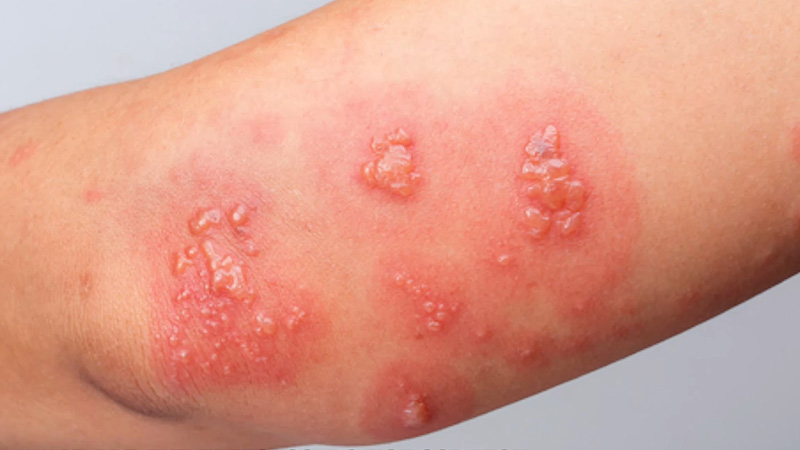
Dealing with a poison ivy rash can be incredibly uncomfortable, but there are several natural remedies that can provide relief from the itching and discomfort. Here are five natural remedies for poison ivy rashes:
Baking Soda
Baking soda is a readily available household item with soothing properties. To use it, make a paste by mixing baking soda with a small amount of water until it forms a thick consistency.
Apply the paste to the affected area and let it dry before rinsing it off. Baking soda can help reduce itching and inflammation.
Vinegar
Vinegar, particularly apple cider vinegar, can be effective in alleviating poison ivy rash symptoms. Mix equal parts water and vinegar and apply the solution to the rash using a cotton ball or cloth. The natural acidity of vinegar can help relieve itching and reduce inflammation.
Aloe Vera
Aloe vera is well-known for its soothing properties and is a popular remedy for various skin irritations. Apply fresh aloe vera gel or commercially available aloe vera gel from a trusted source to the affected area. Aloe vera can provide relief from itching, reduce inflammation, and promote the healing of the rash.
Apple Cider Vinegar
Apple cider vinegar, in particular, is known for its anti-inflammatory and antimicrobial properties. Dilute apple cider vinegar with an equal amount of water and apply it to the rash using a cotton ball. Let it air dry. This solution can help alleviate itching, reduce inflammation, and prevent infection.
Ocean Water
If you happen to be near the ocean, taking a dip in saltwater can provide some relief for a poison ivy rash. The saltwater can have a drying effect on the rash, potentially reducing inflammation and itching. However, the effectiveness of this remedy may vary among individuals.
What Kills Poison Ivy on Skin?
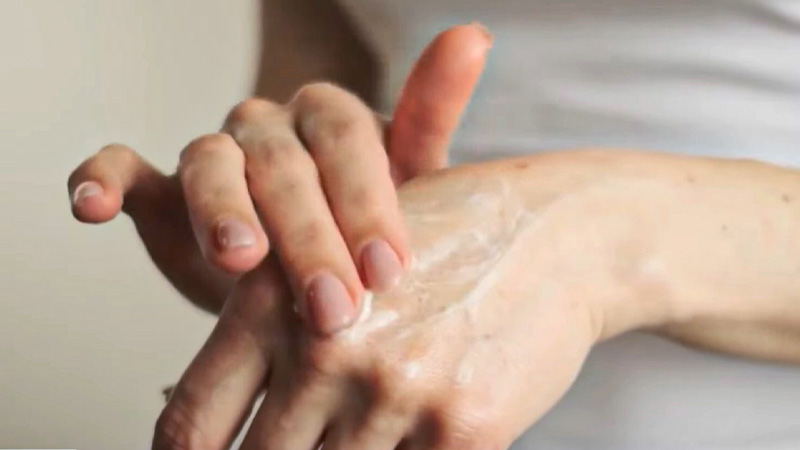
To effectively remove and neutralize poison ivy oil (urushiol) from the skin, you can use several methods:
Soap and Water
One of the most effective ways to kill poison ivy oil on the skin is to wash the affected area thoroughly with soap and water. Urushiol is an oily substance, and soap helps break it down and remove it from the skin. Use gentle, circular motions while washing to lift the oil from the skin.
Rubbing Alcohol
Rubbing alcohol (isopropyl alcohol) can be used to clean the skin and neutralize urushiol. Soak a clean cloth or cotton ball in rubbing alcohol and gently wipe the affected area. Avoid harsh rubbing, as it can irritate the skin.
Commercial Poison Ivy Cleansers
There are specialized poison ivy cleansers available over the counter at drugstores and pharmacies. These cleansers are designed to effectively remove urushiol from the skin. Follow the product’s instructions carefully.
Hydrogen Peroxide
Some people use hydrogen peroxide to clean the affected area, as it can help to break down urushiol and disinfect the skin. Apply hydrogen peroxide to a clean cloth or cotton ball and gently wipe the skin.
Baking Soda Paste
Create a paste by mixing baking soda with water until it forms a thick consistency. Apply the paste to the affected area and allow it to dry before rinsing it off. Baking soda can help neutralize urushiol and alleviate itching.
Cool Compresses
Applying cool compresses to the rash can help soothe the skin and alleviate itching. Soak a clean cloth in cold water and gently place it on the affected area for 15-20 minutes. This can provide immediate relief.
FAQs
Is a hot tub good for poison ivy rash?
Poison ivy is a plant and the oil it produces can cause rashes. If you have poison ivy, showering immediately after contact will likely improve your situation.
Hot tubs are not good for poison ivy rash because they could lift and spread the oils associated with this pest, making things worse.
Can you develop immunity to poison ivy?
Some people may develop a degree of immunity to poison ivy with repeated exposure, but this is not guaranteed, and many individuals remain sensitive throughout their lives.
How long does a poison ivy rash last?
A poison ivy rash typically lasts for one to three weeks, but the duration can vary depending on the individual, the severity of the reaction, and whether treatment is sought.
Can pets spread poison ivy?
Yes, pets can spread poison ivy oil (urushiol) to their fur, which can then transfer to humans when they pet or touch the contaminated fur. It’s essential to wash pets thoroughly if they have been exposed to poison ivy.
To Recap
We’ve explored the potential benefits of using saltwater, such as swimming in the ocean, as a remedy for poison ivy rashes.
While saltwater can offer relief for some individuals by drying out blisters, exfoliating the skin, and providing a soothing sensation, it’s essential to emphasize that its effectiveness varies from person to person.
It’s not a guaranteed or scientifically proven remedy. For severe poison ivy reactions or uncertainties, always consult a healthcare professional who can provide a proper diagnosis and recommend appropriate treatments.
Ultimately, the best approach to poison ivy is prevention, which includes learning to identify the plant and taking precautions to avoid contact whenever possible.

